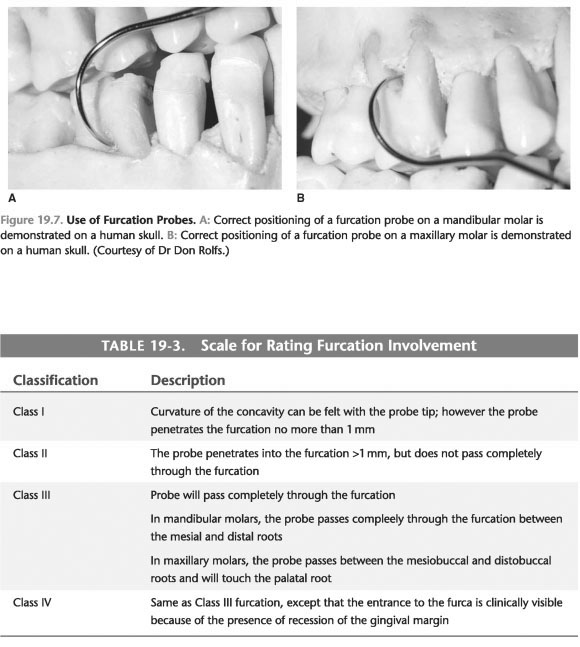Furcation Involvement
1. In the splitting of the probe is used to assess the fork on the part multirooted tooth. Most molars multi-roots, but some of the maxillary premolar also develop with two roots to build capacity for the fork on the part of some premolars.
2. Fork probes, curved, blunt end tools that allows you to easily reach the junction areas.
3. The split occurs on multi-root tooth when periodontal infection penetrates into the area between and around the roots, which leads to loss of attachment and loss of alveolar process between the roots of the tooth.
a. Mandibular molars usually be bifurcated (mesial and distal roots), with a potential fork attend both individuals and linguistic aspects of the tooth (Fig. 19-7a).
B. Maxillary molars usually trifurcated (mesiobuccal, distobuccal, and Palatine roots) with a potential fork a person mesial and distal aspects of the tooth (Fig. 19-7B).
c. Maxillary first premolars can have branched roots buccal and Palatine roots) with potential to fork on the part mesial and distal aspects of the tooth.
4. Fork involvement is often a signal for periodontal surgery, after nonsurgical treatment, so the detection and documentation of the fork participation is an essential component of a comprehensive periodontal evaluation.
5. Fork participation must be written using a scale that defines the severity (or degree) the splitting of the invasion. Table 19-3 shows commonly used scale rating fork invasions multichannel teeth.

